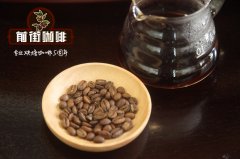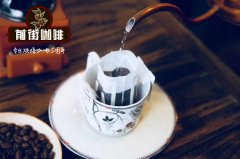How about coffee in Burma? A brief History of Coffee in Myanmar
For professional baristas, please follow the coffee workshop (Wechat official account cafe_style)

Over the past few years, Myanmar's coffee industry has emerged on the international stage with the cooperation of the Myanmar Agricultural Promotion Agency (Myanmar Agriculture Department), the United States Agency for International Development (USAid), the Coffee quality Association (CQI) and the country's hard-working coffee farmers. Nearly a hundred years ago, when British missionaries introduced the first coffee trees from Costa Rica, the coffee industry in Myanmar was still like a newborn chick, but now it has thrived into a productive industry. OGS works closely with Burmese boutique coffee bean producers to provide high quality Burmese coffee beans to bakers to serve their customers who want to try different or new producing areas.
Myanmar is bordered by India, Bangladesh and the Bay of Bengal to the west, China, Laos and Thailand to the east, the Himalayas to the north and the Andaman Sea to the south. Few countries can share borders with such culturally diverse neighbors.
A brief History of Burma Coffee
1885: British missionaries plant the first batch of coffee in Myanmar
1936: Myanmar exports 95 tons of coffee
1952: Smee 795 coffee is introduced on the outskirts of Binwulun town in Mandalay district.
1986: the Burmese government (GOM) promotes a national coffee cultivation plan and imports T8667 and Kaduai varieties from Costa Rica
2015: Myanmar, with the assistance of the American Fine Coffee Association (SCAA), the Coffee quality Association (CQI), Wenlock International (Winrock) and the United States Agency for International Development (USAid), hosted Myanmar's first national cup testing conference in Yangon, which significantly improved the quality of coffee from planting to post-processing.
2016: Burmese coffee makes its debut at the annual coffee conference held by the American Fine Coffee Association (SCAA) in Atlanta, USA.
According to the Food and Agriculture Organization of the United Nations (FAO), the north of Myanmar has the potential to produce the highest quantity of high-quality Arabica coffee with the advantages of a high-quality laterite plateau and other advantages such as more than 1000 meters (3300 feet) above sea level, soil suitable for coffee trees, average rainfall of 1500 to 2500 cm (59 to 79 inches), and obvious dry season necessary for growing coffee trees.
The environment of growing coffee in Myanmar
The cultivation and production of high-quality coffee must take into account several important environmental factors, including altitude and temperature, rainfall and water supply, soil, slope aspect and slope.
Altitude affects several key environmental factors, so altitude should be taken into account in determining the ideal coffee growing environment in addition to temperature, rainfall and water supply, soil, aspect and slope.
Arabica coffee must be grown at an altitude of more than 1000 meters, and the quality of low-altitude Arabica coffee does not meet the requirements of the global market. Coffee farms and micro-farms in Myanmar are usually located between 1100 and 2200 meters above sea level, while coffee in some remote areas, such as Chin State and Chin and Kachi, grows at an altitude of 2800 meters.
Arabica coffee prefers cool temperatures, with the most suitable daily average temperature between 20 and 24 degrees Celsius (68 to 75 degrees Fahrenheit), while the average temperature in Pyin Oo Lwin is 19.7C (67.5F). If the temperature exceeds 30 degrees Celsius (86 degrees Fahrenheit), it may cause the photosynthesis of coffee trees to stop. on the other hand, if the average temperature is below 15 degrees Celsius (59 degrees Fahrenheit), it will inhibit the growth of coffee trees and make coffee inferior. As Arabica coffee is extremely prone to frost damage, it is necessary to make good use of tree shading to reduce possible damage.
Rainfall and Water supply in Myanmar
The ideal rainfall for growing Arabica coffee is more than 1200 to 1500 centimeters (47 to 60 inches) per year, and the total rainfall and rainfall distribution patterns are equally important, while the annual rainfall in Pyin Oo Lwin is 1400 centimeters (55 inches).
Coffee farms in Myanmar generally use silver oaks as shade trees. in addition to blocking the wind, silver oaks also have many other important functions. When the climate is dry, the shading of silver oak can protect young coffee trees from drought stress and avoid overexposure, and shading can achieve a better balance in flowering and growth, and reduce the probability of frost damage. In addition, the fallen leaves and pruning of silver oak produce organic matter and nutrients, which can continuously provide the soil with large amounts of micronutrients needed to maintain health.
At present, several coffee varieties have been planted and tested in the main coffee growing areas in Myanmar, including SL-34, S795, Catuai and T8667.
Coffee growing areas in Myanmar are mostly hilly and tribal environments, and people who work on coffee farms have lived and worked in this hilly environment for generations. So they naturally know a lot about the land in the area and know how to grow it to get the best production results. Perhaps, most Burmese people focus on big temples, and their simple life makes Burmese have a cheerful and friendly nature.
Important Notice :
前街咖啡 FrontStreet Coffee has moved to new addredd:
FrontStreet Coffee Address: 315,Donghua East Road,GuangZhou
Tel:020 38364473
- Prev

Who invented the siphon pot? Is the brewed coffee good?
Professional coffee knowledge exchange more coffee bean information Please pay attention to the coffee workshop (Wechat official account cafe_style) siphon pot (Syphon) commonly known as "plug wind pot" or "siphon", is a simple and easy to use coffee brewing method, is also one of the most popular coffee brewing methods in cafes. The siphon kettle uses water to heat and produce water vapor, which causes thermal expansion and cold contraction.
- Next

How to make earbag coffee? What's the technique?
Professional coffee knowledge exchange more coffee bean information please follow the coffee workshop (Wechat official account cafe_style) hang ear coffee _ ear coffee brewing method of coffee hang ear bag hang ear type filter coffee want to brew a cup of quality coffee by yourself, you can't help but prepare some special coffee tools such as bean grinders, which is too troublesome for beginners who are just in contact with coffee.
Related
- What brand of black coffee is the most authentic and delicious? what are the characteristics of the flavor of the authentic Rose Summer Black Coffee?
- Introduction to the principle and characteristics of the correct use of mocha pot A detailed course of mocha pot brewing coffee is described in five steps.
- Which is better, decaf or regular coffee? how is decaf made?
- How much is a bag of four cat coffee?
- How about four Cat Coffee or Nestle Coffee? why is it a cheap scam?
- Which is better, Yunnan four Cats Coffee or Nestle Coffee? How about cat coffee? is it a fake scam? why is it so cheap?
- How about Cat Coffee? what grade is a hoax? which instant coffee tastes better, four Cat Coffee, Nestle Coffee or G7 coffee?
- Process flow chart of coffee making-Starbucks coffee making process what coffee tastes good at Starbucks
- The top ten best coffee beans in the world Rose summer coffee or Tanzanian coffee tastes good
- Yunnan four cat coffee is good to drink?_four cat coffee is a big brand? four cat blue mountain coffee is fake?

